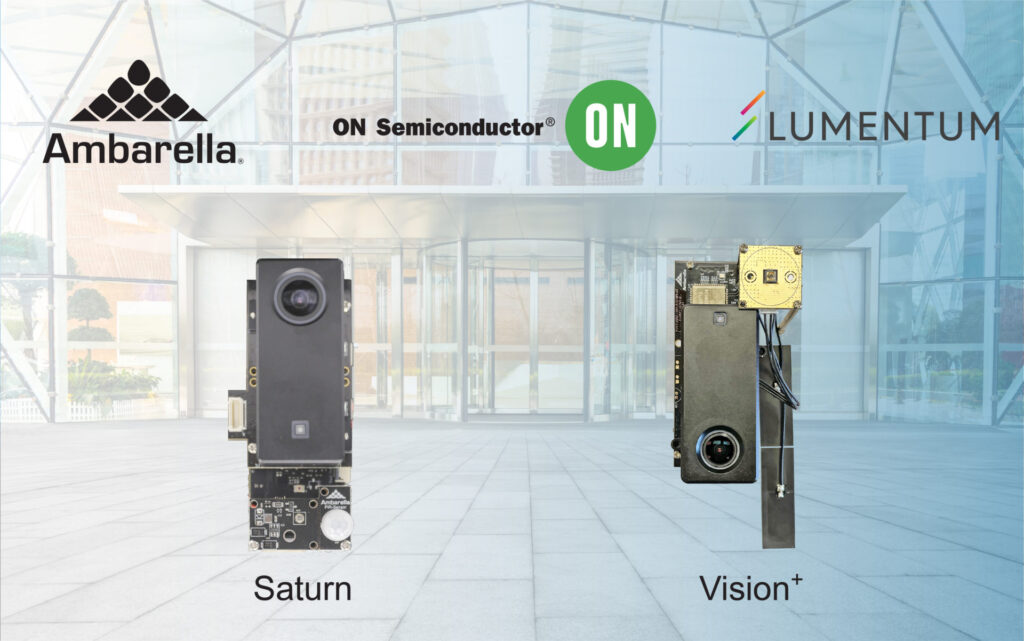 Ambarella, Inc. announced two new joint reference designs that accelerate AIoT device deployment across verticals, building on the companies’ previous joint solution for contactless access systems. By combining the data from Lumentum’s high-performance VCSEL array illuminators and an ON Semiconductor image sensor using Ambarella’s AI SoC, higher levels of accuracy and more intelligent decision-making can be achieved in next-generation AIoT devices for biometric access control, 3D electronic locks, and other intelligent sensing applications.
Ambarella, Inc. announced two new joint reference designs that accelerate AIoT device deployment across verticals, building on the companies’ previous joint solution for contactless access systems. By combining the data from Lumentum’s high-performance VCSEL array illuminators and an ON Semiconductor image sensor using Ambarella’s AI SoC, higher levels of accuracy and more intelligent decision-making can be achieved in next-generation AIoT devices for biometric access control, 3D electronic locks, and other intelligent sensing applications.
Originally intended for biometric access control and electronic locks, these new reference designs can also address the needs of smart cities, smart buildings, smart homes, and intelligent healthcare. Additionally, the high level of integration provided by these joint solutions significantly lowers system power consumption and thermal design requirements while enabling much smaller product form factors.
The three companies’ new joint AIoT solutions consist of two reference designs and additional 3D sensing development kits, each uniquely configured to address application-specific demands for the combination of AI processing, 3D depth sensing, and vision sensing:
Targeted at next-generation biometric access control readers, the Vision+ reference design is the AIoT industry’s first 4K solution to perform single-camera, 940nm structured-light sensing based on RGB-IR technology. It is also the first to leverage a single-chip solution for depth processing, AI processing, and video processing. Based on the Ambarella CV22 CVflow AI vision processor, it includes single-camera structured-light sensing powered by Lumentum’s VCSEL technology, featuring a range of 2 meters, and a 4K (8MP) RGB-IR CMOS image sensor from ON Semiconductor.
Targeted at next-generation smart electronic door locks, or eLocks, for both commercial and residential applications, the Saturn reference design is the AIoT industry’s first to integrate AI processing for both single-camera structured-light sensing and fast-boot video processing. It is based on the Ambarella CV25 CVflow AI vision processor and includes a structured-light camera powered by Lumentum’s VCSEL technology and the AR0237CS 2MP RGB-IR image sensor from ON Semiconductor.
Targeted at intelligent sensing applications and with opportunities across verticals, Ambarella’s CV2 series CVflow AI vision processor-based development kits can now be outfitted with ToF sensor adapters that are powered by Lumentum’s leading-edge VCSEL arrays. An optional 4K RGB-IR image sensor adapter is also available for these kits.
The open software development kit (SDK) for Ambarella’s CVflow AI vision processors allows the easy integration of third-party applications while enabling OEMs to address differing regional requirements with a single platform (for example, using different AI algorithms in different regions). Additionally, this robust, Linux-based SDK expands the capabilities of edge sensing devices, simplifies product development, and speeds time-to-market through:
Custom application development capabilities
Support for different 3D modalities, including structured light and ToF. Uniquely, a single Ambarella SoC provides 3D sensing processing without the need for a dedicated depth processor or a separate host processor
High AI inference capabilities on the camera device to enable multiple neural networks (NNs) to run simultaneously
Robust AI tools to support deep neural network (DNN) development and migration
Integrated ISP to handle challenging scenes, including high dynamic range (HDR) and low light scenarios
Built-in Arm processors to run customer applications
Integrated security hardware, including secure boot, OTP to store encryption keys, and Arm TrustZone technology for secure encryption key comparisons
Rich peripheral interface support to simplify system designs
These joint reference designs and development kits are expected to be available in June.

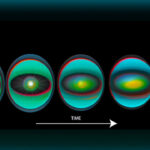
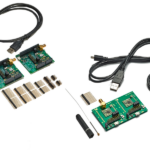
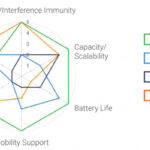
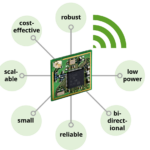

Leave a Reply